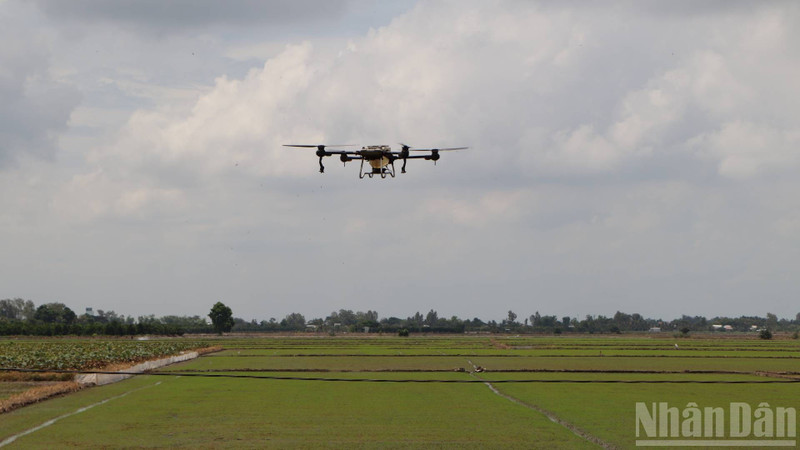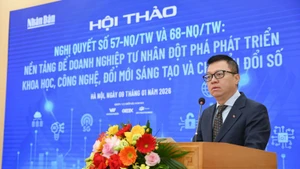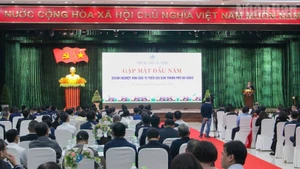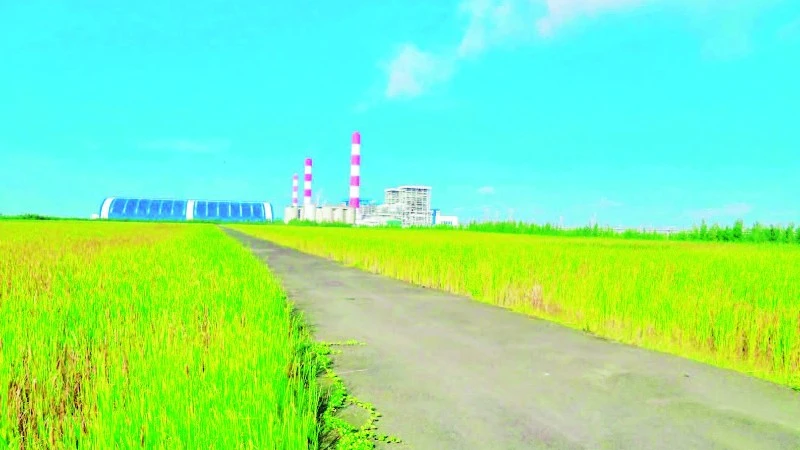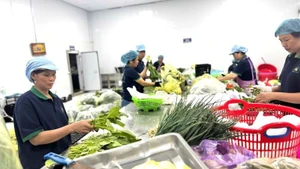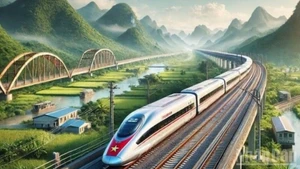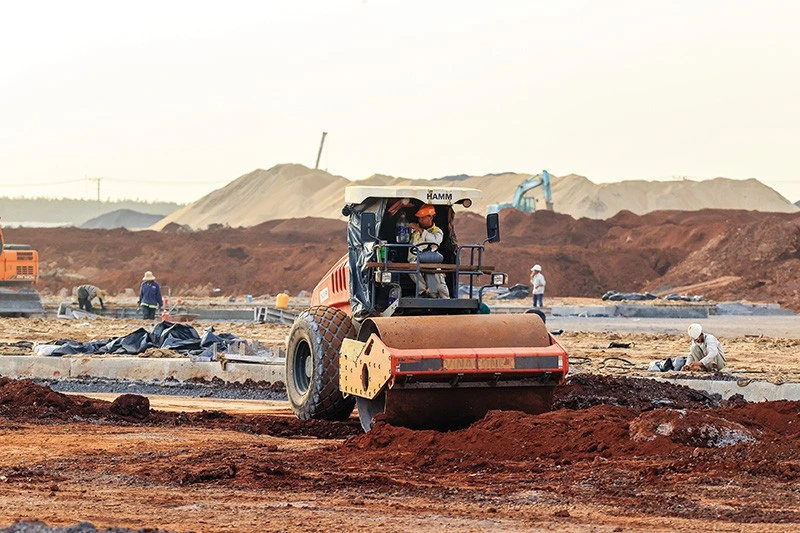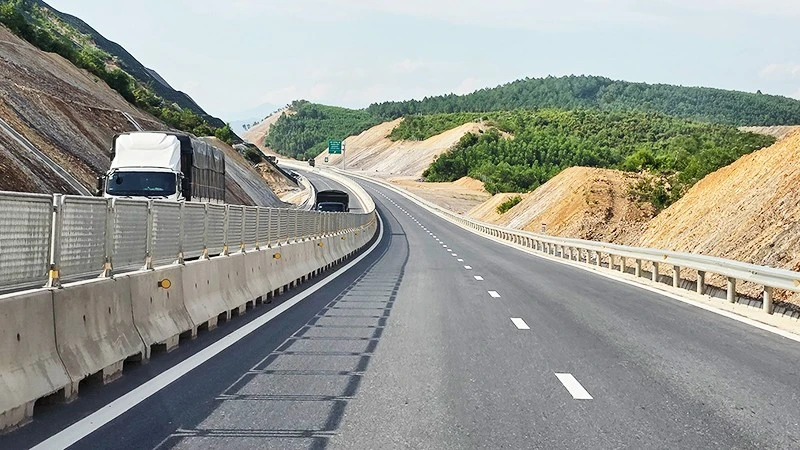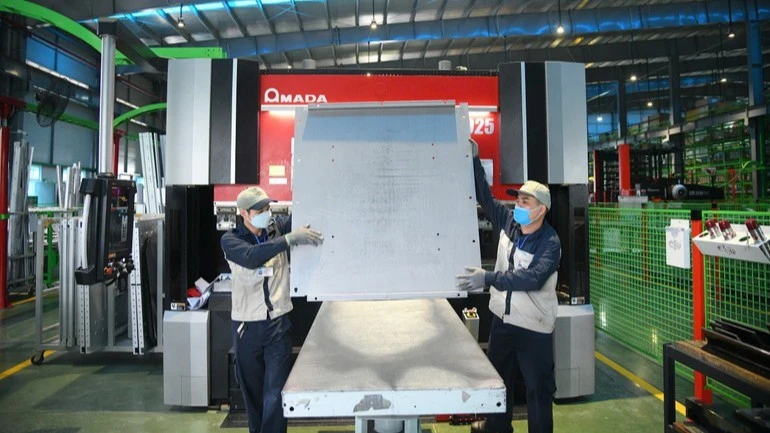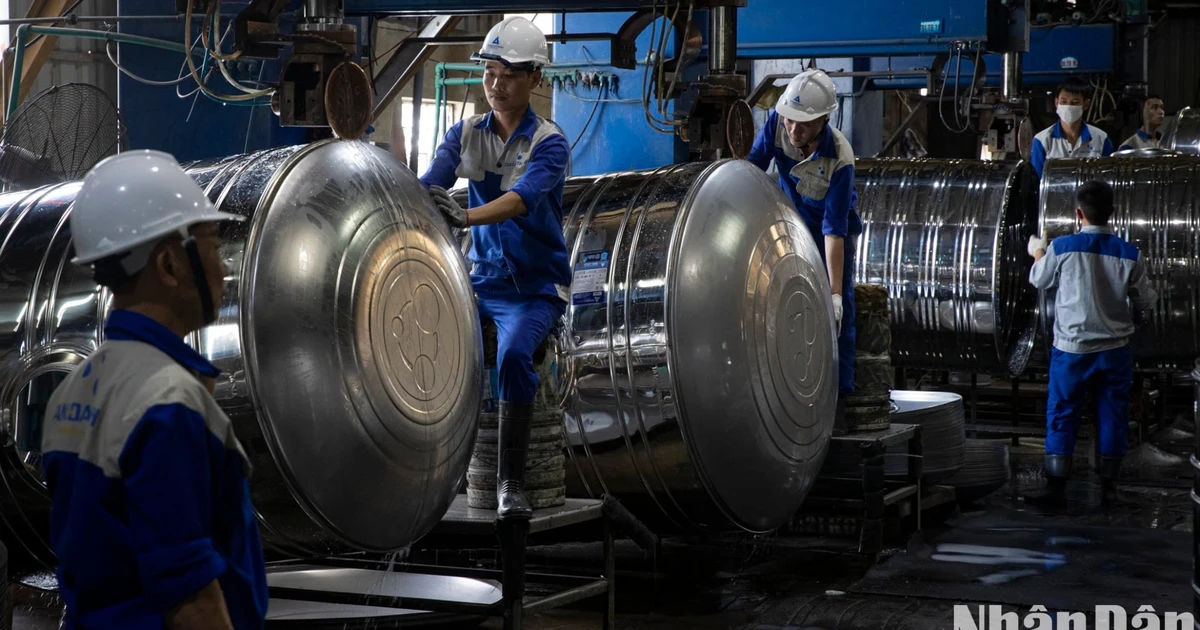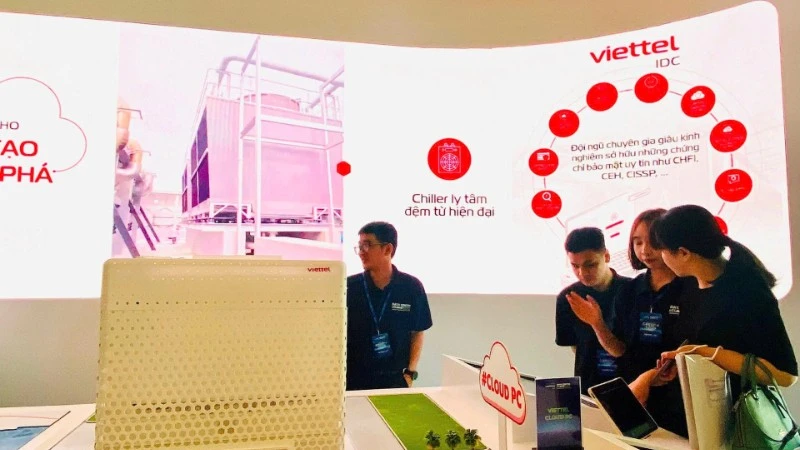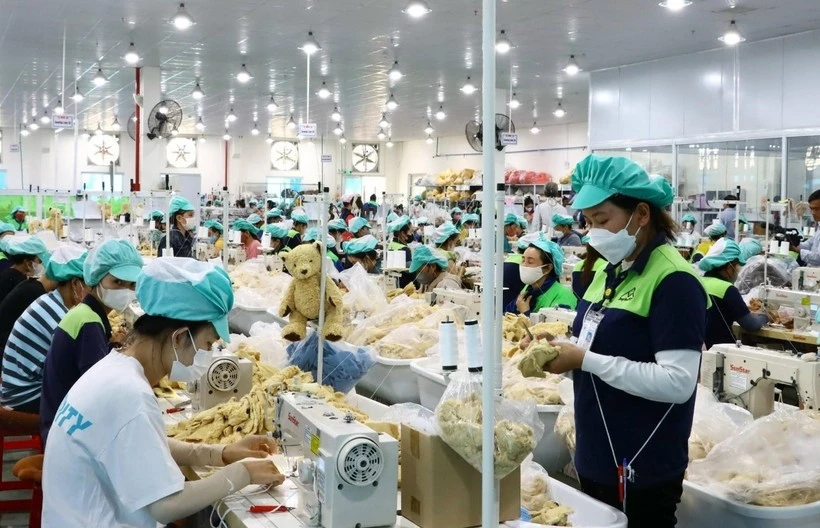Effectiveness from high-quality rice growing models
In the former An Giang Province alone, there were more than 20 enterprises producing rice seeds across an area of more than 30,000 hectares. In 2024, farmers in the former An Giang Province participating in the project spanned an area of 8,536 out of 20,609 hectares, reaching 41.4% of the planned area. In 2025, the registered area for participation in the project is 44,051 hectares. With this area, the agricultural sector can build a high-quality, high-yield raw material area, thereby attracting businesses to invest, link, and consume.
Farmer Ly Quang Nghi in Binh Chanh 3 Hamlet, Binh My Commune, owns 3 hectares of agricultural land, which he has traditionally cultivated. Since 2024, he has joined the high-quality rice cultivation project, and achieved promising results, which encourages him to continue participating.
“I have compared the two models; with the same area, cultivating high-quality rice can yield 8.25 tonnes/ha, bringing in profits 11.28 million VND/ha higher than the control field cultivated with traditional methods,” he said.
According to Ly Quang Nghi, the increased profit came from applying cluster sowing techniques, which reduced the amount of seed sown from the traditional way of 150–200 kg/ha to only 65–80 kg/ha. Spending on pesticides and fertilisers also decreased, while the less dense sowing resulted in more grain-bearing panicles and fewer diseases compared to the traditional dense sowing method.
Farmer Hong Van Ky, residing in Long Thanh Hamlet, Thanh My Tay Commune, shared that he previously cultivated rice traditionally on 10 hectares. In 2022, he learned about and participated in a smart rice cultivation model, testing it on 0.5 ha out of his 10 hectares for comparison. At harvest time, the control results showed that the actual yield from the model area was 0.4 tonnes/ha higher than from traditional cultivation area, increasing profits by between 1,349,000 and 2,528,000 VND/ha. From 2023, Ky confidently switched to smart rice cultivation on his entire 10 hectares.
According to Tran Van Lo Ba, Chairman of the Board of Directors and Director of Phu Thanh Agricultural Cooperative in Cho Vam Commune, building a sustainable rice cultivation model is a new production trend based on the “one must, six reductions” approach. This helps farmers manage irrigation effectively and improve the efficiency of fertiliser and pesticide use by applying integrated pest management process; it also contributes to minimising environmental impacts, promotes efficient resource use, and enhances resilience to climate change in the paddy rice production system.
“100% of farmers participating in the model have been transferred technological advances and have applied sustainable rice cultivation processes, achieving the basic level according to self-assessment criteria,” Ba explained.
Farmers in the project area will be fully equipped with knowledge of sustainable rice cultivation standards and the responsibility to use pesticides and chemical fertilisers in a way that manages residues, thereby stabilising the ecological environment of rice-growing land and coping with climate change. This increases economic efficiency for producers by reducing input costs while increasing the selling price of rice, thereby increasing income.
An Giang restructures agriculture with an economic mindset
“Farmers reduce inorganic fertiliser use by 20–30%, replacing it with organic fertiliser to improve rice quality; reduce pesticide use by 50%, use pesticides responsibly, and cut costs,” Ba further assessed.
The model helps reduce greenhouse gas emissions by three times compared to traditional farming practices, while also increasing income by about 1,922,000 VND/ha compared to the control model, improving the environment and product quality, and contributing to sustainable agricultural development.
To promote potential and advantages, in the future, the Phu Thanh Agricultural Cooperative will continue promoting modern agricultural production, circular economy, and emission reduction, through measures such as continuing to disseminate and encourage its members and farmers to restructure agricultural sector towards improve added value and sustainable development, and effectively implementing linkage chains in production and consumption.
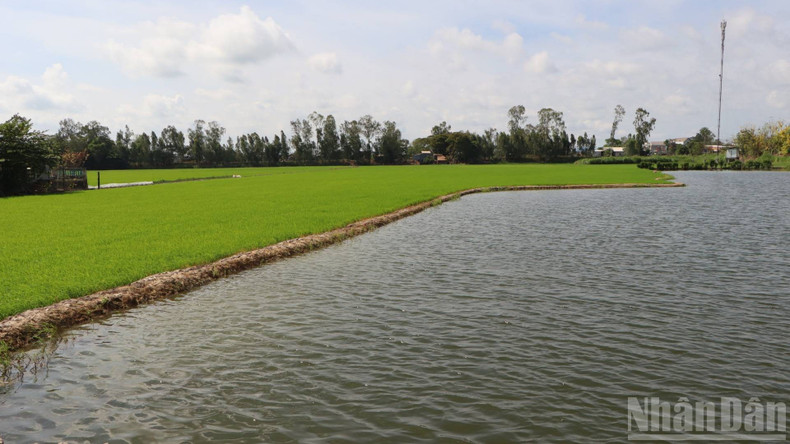
Previously, the former An Giang Provincial People’s Committee set the target to promote the stable formation and development of cooperatives, cooperative groups, and farmers’ organisations, making important contributions to the rice linkage chains in the province; and gradually increasing the proportion of production linked to consumption year by year. From there, a model value chain for the rice sector would be built, serving as an exemplary model for developing An Giang’s rice sector until 2030.
At a recent conference contributing to the draft political document for the An Giang Provincial Party Congress for the 2025–2030 period, Le Minh Hoan, Deputy Chairman of the National Assembly, spoke on the province’s agricultural development direction.
According to Le Minh Hoan, new An Giang Province is not only an expansion in area and boundaries, but also a new space of opportunities. An Giang’s agricultural restructuring with an economic mindset is an urgent requirement in the era of artificial intelligence and the green economy orientation. Instead of separating agriculture, forestry, and fisheries into distinct sectors, a new approach is needed: agriculture as a multi-tiered, multi-sectoral ecosystem where all values are integrated and closely connected.
Resolutions 57 and 68 are focused on developing agriculture based on science, technology, digital transformation, innovation, and the leadership role of the private economy and leading enterprises. An Giang’s agricultural development and growth direction should connect with the leading role of research institutes and universities, especially in the fields of aquaculture, rice, and climate change as well as connect with international organisations to seek superior farming ideas and practical experiences from countries with similar conditions.
In addition, “intellectualising farmers” and enhancing the capacity of rural communities and farmers will bring about positive and sustainable changes. The An Giang agricultural development orientation must identify farmers as the central actors.
Le Minh Hoan, Deputy Chairman of the National Assembly, suggested that, looking towards APEC 2027, An Giang Province is implementing 21 key infrastructure projects. The agricultural sector could propose the 22nd project — a “soft project” with the overarching theme “Impressions of An Giang agriculture”. Products showcased and served at the APEC 2027 event would be the crystallisation of quality, agricultural economic value, and agricultural product brand of the province, conveying the message of its products — every meal of low-emission rice from the one-million-hectare high-quality, low-emission rice project.
